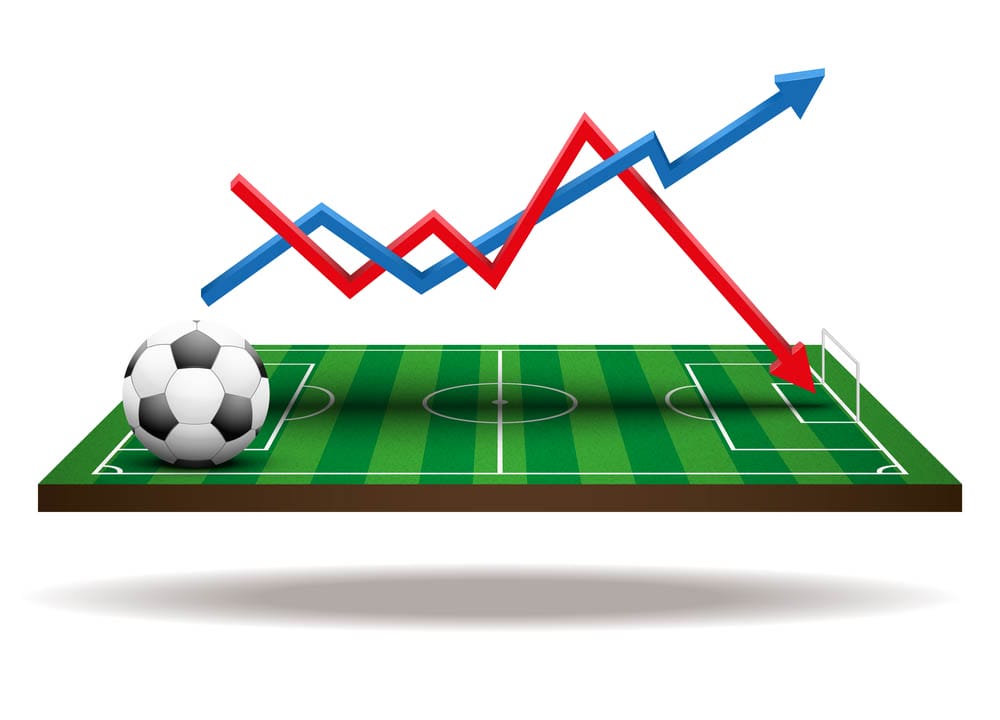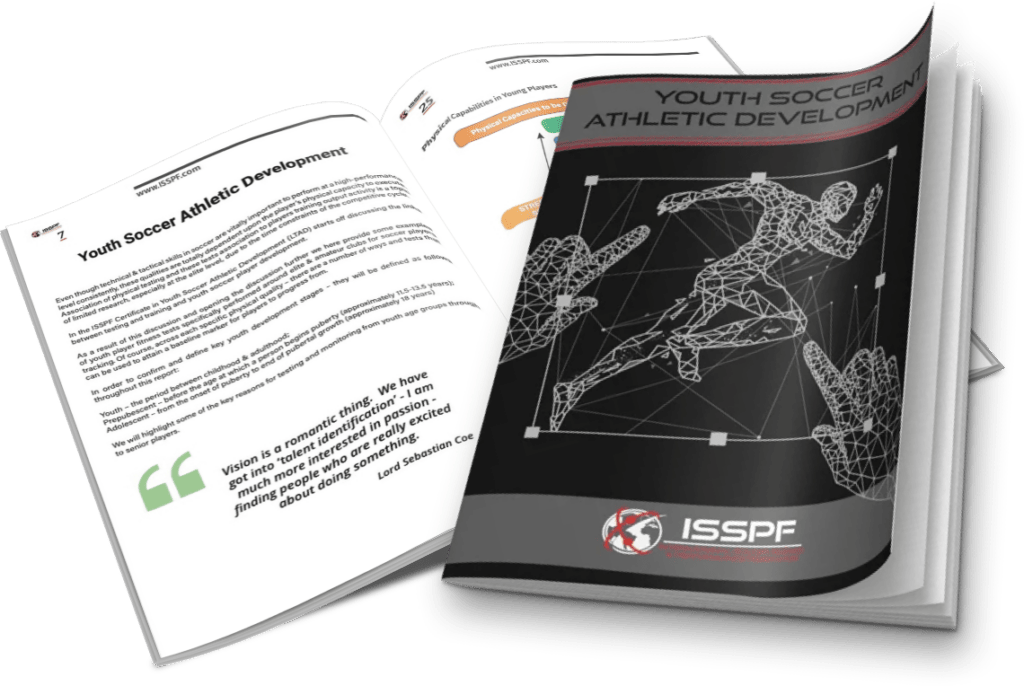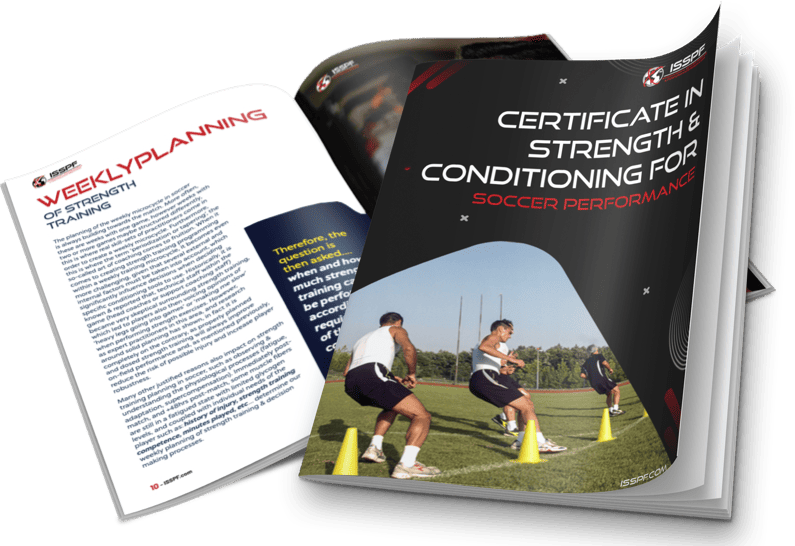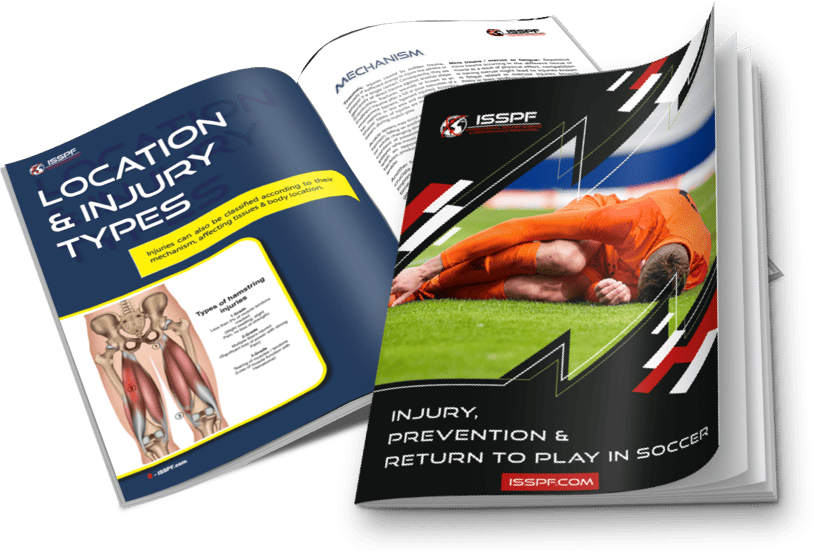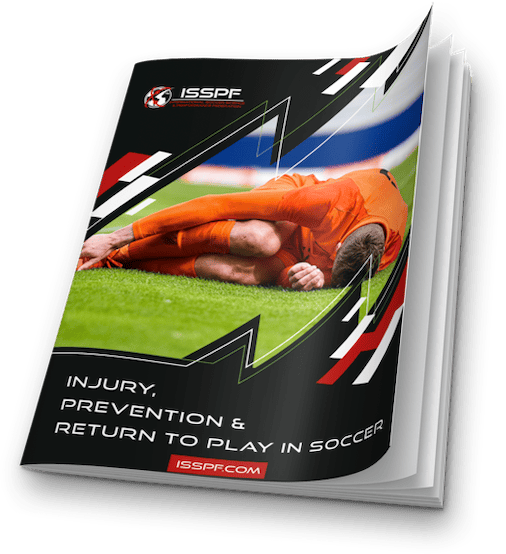Written by: Alper Çıkıkcı (BSc, MSc) Marmara University -Institute of Health Sciences -Kinesiology and Training Sciences
In the realm of women’s soccer, the physical growth and advancement of players hold immense significance in determining their success on the field. As the sport continues to expand and evolve, the demands placed upon athletes are growing increasingly rigorous.
This article will explore the significance of physical development for women soccer players and delve into key elements that contribute to their overall performance. From strength and agility to speed and endurance, we will uncover the factors that shape women soccer players into formidable forces in the game.
Building a Solid Foundation: Strength
Strength serves as the cornerstone of physical development in women soccer players. It empowers them to stand their ground, win challenges, and overpower opponents.
Strength training exercises, such as weightlifting, resistance training, and bodyweight exercises, aid in building lean muscle mass, enhancing bone density, and increasing overall power. A comprehensive strength training program focuses on the entire body, with particular emphasis on key areas like the lower body, core, and upper body, to optimize performance on the field.
Strength is a fundamental attribute in soccer that directly influences a player’s performance, physicality, and overall effectiveness in the game. Developing strength is a multifaceted process that requires a comprehensive and targeted approach.
In this article, we explore various aspects of strength development in soccer players, including resistance training, functional exercises, nutrition, and recovery strategies. By implementing these techniques, players can unlock their full potential and excel on the field.
Resistance Training
Resistance training forms the foundation of strength development in soccer players.
It involves utilizing external resistance, such as weights or resistance bands, to stimulate muscle growth, enhance power, and improve overall strength. The focus should be on compound exercises that engage multiple muscle groups simultaneously, mirroring the movements required in soccer.
- Lower Body: Effective exercises for developing lower body strength include squats, lunges, deadlifts, and step-ups. These exercises target the quadriceps, hamstrings, glutes, and calves, which are essential for explosive movements, stability, and endurance during matches.
- Core: Core strength is vital for stability, balance, and generating power. Exercises such as planks, Russian twists, and medicine ball throws engage the core muscles, including the abdominals, obliques, and lower back, thereby strengthening the player’s overall athleticism.
- Upper Body: Although soccer predominantly relies on lower body strength, upper body strength is also crucial for shielding opponents, winning aerial battles, and maintaining balance. Exercises such as push-ups, pull-ups, and shoulder presses develop upper body strength and enhance overall physicality.
Functional Exercises
In addition to resistance training, incorporating functional exercises into training routines is crucial for translating strength gains into soccer-specific skills and movements. Functional exercises mimic the demands of the game, improving coordination, agility, and overall athleticism.
- Plyometrics: Plyometric exercises, such as box jumps, lateral bounds, and hurdle hops, develop explosive power and improve speed and agility. They enhance the player’s ability to quickly change direction, accelerate, and perform dynamic movements on the field.
- Ball-based Exercises: Integrating the ball into strength training exercises enhances coordination, ball control, and stability. Exercises like single-leg squats while dribbling, partner passing drills with added resistance, and balance exercises on a ball improve strength while incorporating technical skills.
Swift and Nimble Moves: Agility
Agility holds crucial importance in women’s soccer as players need to swiftly change direction, evade opponents, and maintain control over the ball. Agility drills, such as ladder exercises, cone drills, and shuttle runs, enhance coordination, footwork, and reaction time. By honing their agility, women soccer players gain a competitive edge, enabling them to navigate through tight spaces and execute swift, precise movements during games.
Agility Type Drills: Cone drills, ladder drills, and shuttle runs are valuable for developing quickness, agility, and coordination. These exercises simulate game situations, improving a player’s ability to react rapidly, change direction, and evade opponents.
Leaving Opponents in the Dust: Speed
Speed can be a game-changer in soccer, enabling players to outrun opponents, penetrate defensive lines, and create crucial goal-scoring opportunities.
Speed training drills, including sprints, interval training, and plyometric exercises, assist women soccer players in enhancing their acceleration, top speed, and overall running mechanics. By maximizing their speed potential, players can become formidable assets on the field, constantly posing a threat to the opposition.
Going the Extra Mile: Endurance
Endurance plays a vital role in women’s soccer as matches often require players to maintain a high level of physical output for extended periods. Building cardiovascular endurance through activities like long-distance running, interval training, and circuit workouts ensures that players can sustain their performance throughout the game.
Improved endurance not only allows women soccer players to outlast opponents but also aids in recovery between matches, reducing the risk of fatigue-related injuries.
Endurance is a key component of success in soccer, enabling players to maintain a high level of performance throughout matches, run tirelessly, and outlast opponents.
Developing endurance requires a comprehensive approach that encompasses physical conditioning, specific training methods, nutrition, and recovery strategies. In this article, we explore the various aspects of developing endurance in soccer players, providing insights and techniques to unlock their potential on the field.
Aerobic Conditioning
Aerobic conditioning forms the foundation of endurance development in soccer players. It focuses on improving cardiovascular fitness and the body’s ability to efficiently utilize oxygen during exercise. The following strategies can be implemented:
- Long-Distance Running: Regular long-distance runs, such as steady-state jogs or distance-based intervals, improve aerobic capacity and build a foundation of endurance. Gradually increasing the duration and intensity of these runs over time challenges the cardiovascular system and helps players adapt to sustained effort during matches.
- Interval Training: Interval training involves alternating between high-intensity bursts and active recovery periods. This method mimics the stop-and-go nature of soccer and enhances both aerobic and anaerobic capacity. Incorporating interval runs, shuttle runs, and fartlek training into training sessions can improve endurance and simulate game scenarios.
- High-Intensity Interval Training (HIIT): HIIT workouts involve short bursts of intense exercise followed by short recovery periods. This method challenges the cardiovascular system, improves anaerobic capacity, and increases overall fitness. Incorporating exercises like sprints, burpees, and mountain climbers in a structured HIIT format can help soccer players develop endurance while building speed and agility.
Sport-Specific Conditioning
To maximize endurance development for soccer, incorporating sport-specific conditioning drills is essential. These exercises simulate game situations, enhancing soccer-specific movements and endurance requirements.
- Small-Sided Games: Small-sided games, such as 3v3 or 5v5, in a limited space, offer intense and dynamic gameplay. They require constant movement, quick decision-making, and rapid changes of direction, improving endurance while enhancing technical skills and tactical awareness.
- Game Simulations: Structured training sessions that replicate match conditions are invaluable for building endurance. These simulations involve playing full games or modified versions with extended periods of play and limited breaks. This allows players to experience the physical demands of a match and adapt their endurance accordingly.
- Interval-Based Drills: Integrate interval-based drills within training sessions that focus on specific soccer movements, such as passing, shooting, and dribbling. For example, performing passing drills with timed intervals challenges players to maintain accuracy and intensity while enduring extended periods of physical exertion.
Enhancing Range of Motion: Flexibility
Flexibility is often overlooked but is critical for women soccer players. It contributes to injury prevention, enhances overall mobility, and improves performance on the field.
Dynamic stretching, yoga, and targeted stretching exercises help increase flexibility, allowing players to move with ease, execute complex movements, and reduce the risk of muscle strains or tears. Improved flexibility also aids in recovery, as it helps alleviate muscle soreness and promotes better post-match or post-training relaxation.
A Priority for Longevity: Injury Prevention
Physical development in women soccer players must include a strong focus on injury prevention.
Proper warm-up routines, cool-down exercises, and targeted strengthening exercises for vulnerable areas, such as the knees and ankles, can help minimize the risk of common soccer injuries.
Additionally, proper nutrition, adequate hydration, and sufficient rest play a vital role in preventing injuries and promoting overall well-being. This is one of the hotter topics discussed currently in the women’s game and we look forward to more research and discussion focus in this area in the coming years!
What Next?
To conclude, the physical development of women soccer players is a multifaceted journey that encompasses strength, agility, speed, endurance, and flexibility. By dedicating time and effort to each aspect of physical development, players can unlock their true potential and become formidable forces on the field.
Incorporating a well-rounded training program, including strength and agility drills, speed and endurance training, flexibility exercises, and injury prevention strategies, is essential for enhancing performance.
The Role of Coach Education & ISSPF
In recent years, women’s soccer has witnessed remarkable growth and recognition worldwide.
With this surge in popularity, the demand for high-quality coaching and education has become increasingly important. ISSPF as a globally recognised innovative online soccer coaching educational platform, has emerged as a pivotal resource for all coaches in the game especially those within the women’s soccer coaching fraternity.
This section explores the key reasons why ISSPF is instrumental in empowering and advancing developments in online women’s soccer coaching.
Accessible and Comprehensive Learning Materials
ISSPF offers a vast array of accessible and comprehensive learning materials, specifically tailored to women’s soccer coaching.
Through their online courses, coaches gain access to valuable resources, including instructional videos, lectures, articles, and interactive reading content. This diverse range of materials caters to coaches of all levels, from beginners to experienced professionals.
By providing easily accessible resources, ISSPF eliminates barriers to education and ensures that aspiring women’s soccer coaches can enhance their knowledge and skills, regardless of their geographical location, working or financial constraints.
All courses are time-friendly and ‘self-set learning pace’.
Expert Instruction from Renowned Coaches
One of the standout features of ISSPF is its roster of renowned performance coaches who serve as instructors. A select few of the experts possess extensive experience and knowledge in women’s soccer coaching, offering invaluable insights and expertise to learners. By learning directly from these accomplished coaches, aspiring coaches can gain a deeper understanding of the intricacies of the women’s game.
The opportunity to receive instruction from respected professionals in the field sets ISSPF apart and enhances the quality of women’s soccer coaching education.
Diverse Curriculum Covering All Aspects of Coaching
ISSPF offers a diverse curriculum that covers all aspects of coaching in women’s soccer. From tactical strategies and game analysis to player development and psychology, the platform provides a comprehensive learning experience.
Coaches can choose from a variety of courses based on their specific interests and needs, allowing them to tailor their education to suit their coaching goals. This multifaceted approach ensures that coaches gain a well-rounded understanding of the game and are equipped with the necessary tools to excel in their roles.
Networking Opportunities and Community Support
The ISSPF community creates an environment where coaches can exchange ideas, seek advice, and build meaningful professional relationships. By facilitating networking and future community support, ISSPF strengthens the collective knowledge and expertise of women’s soccer coaches, promoting growth and development within the industry.
Emphasis on Women’s Soccer
A significant advantage of the content within the bespoke courses is its collaborative focus and progress on women’s soccer coaching education.
While there are various coaching platforms available, few prioritize the unique challenges and requirements faced by women’s soccer coaches. By tailoring its content specifically for the women’s game, ISSPF addresses the specific needs of coaches in this realm.
This specialized approach ensures that women’s soccer coaches receive the guidance and support necessary to excel in their coaching careers and contribute to the advancement of women’s soccer globally. ISSPF have specific content currently and future content specially aligned with the development of the women’s game.
ISSPF has emerged as a key resource for women’s soccer coaching education, offering accessible learning materials, expert instruction, a diverse curriculum, networking opportunities, and a specialized focus on the women’s game.
By harnessing the power of technology and bringing together a global community of coaches, ISSPF plays a crucial role in empowering and advancing women’s soccer coaching. As the popularity of women’s soccer continues to soar, platforms like ISSPF will be instrumental in shaping the future of the sport by equipping coaches with the knowledge and skills to drive success at all levels.
Share this article:








